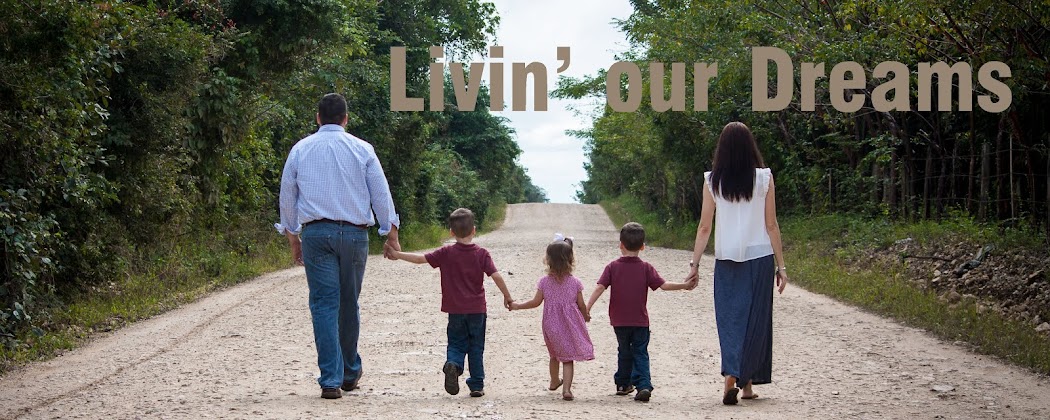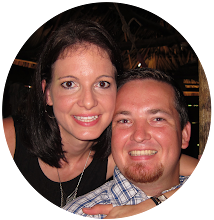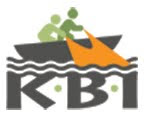 |
| {Domingo and his daughter Candi in front of his fish pond} |
Posted by Jimmy: One of the projects that our Institute students will be learning is how to raise Tilapia. I received several good books about raising Tilapia from a friend here in Petén, and I have read countless articles online, but so far my knowledge has just been book knowledge.

Tilapia is a well known fish here and has a good market with a pretty stable market price.
Before starting 20,000 fish in 20 ponds at the Institute, I decided we needed to practice a little bit first. Shelley convinced me to dig a pond at Domingo's house for our trial run so that he would have some extra income... after all that is the purpose for the ponds.
My first fish advice I received from a fish farmer in Arkansas was this quote, "Every day a fish wakes up and thinks to himself that this is a good day to die for no reason at all." Encouraging, right? Well, Domingo is a friend who won't think I'm an idiot if all the fish die the first time through.
This is the lot Domingo owned next door to his house. It is right on a main road leading back to some other large villages. After measuring and staking everything out, I sent an acquaintance with a backhoe to dig it out. The acquaintance did not follow any of the instructions, so it is not the right dimensions for what we will have at the Institute, but the same principles will apply since it is a dirt pond. We basically used his entire lot and the backhoe dug a hole lot deeper than what I wanted, but oh well. Domingo lives 4 hours away from us, so I couldn't be there that day to supervise, but it won't affect our growth. It will just make it harder to harvest later on.
Taiwan has a Tilapia project on the other side Lake Itzá to "save the white fish", so we can get 40 day old frye at a cheap price. This saves us from having to breed our own. On May 11, I bought 2000 frye and they threw in an extra 200.
They put them in these bags, which I put in the cab of my truck. I was told I had 5 hours give or take. Ok...so the drive to Domingo's house from there is 4.5 hours... and you throw in a ferry ride that can cause great delay sometime. I think that was the most stressful part of the whole project, hoping I got to Domingo's without a bag bursting inside my truck and with the fish still alive. The Institute is only 2 hours from this place, so it won't be that bad in the future.
At Domingo's we put the bags in the water to let them acclimate and had prayer over his fish.
We are not using any commercial fish food or mechanical aeration. We are setting everything up so that it is sustainable in a village without access to a town or supplies. In my research however, I found that there are many common things people here burn as trash that makes great Tilapia food such as: banana leaves, yuca leaves, sweet potato leaves, and the rinds from all of those. We also put a few compost bins in the pond where all of the leftovers from their meals gets tossed.
 |
| {Compost Bin} |
I work with Domingo regularly and he keeps me updated on the fish, but on June 15th, about a month later, I went to go look at the fish myself.
Here is what the fish looked like:
On July 24th I went back again. This time they were 11cm long. We will have a scale next time but for now we are happy with the growth and I think we are right on track.
The closest fish farmer to Domingo is 2 hours away, and there is nobody on the road he lives on with fish, so he is in a really good market. Many families have already placed their order. Because the people are poor, it is not like selling to a restaurant that wants only one pound fish. From what I have been told, the hardest part is keeping the fish alive from 3/4 of a pound to 1 pound. We will start selling them once they reach 1/2 pound, which will hopefully be next month.
Domingo's boys, Wendel and Samuel, are very excited about the fish and are the main ones in charge since their dad is traveling a lot to unreached villages.
I don't want this to be a technical blog about how to raise Tilapia, but if you want to know more, you can write me. You might want to wait until the next update though to see if Domingo makes any money. If we sell all the fish at 5 months after starting, and he has no overhead except to buy the frye to stock the pond, he should net an amount equal to his monthly support as a missionary with the local churches here over that same period of time.
Please keep this project that should help national pastors support their families in your prayers!





















So exciting! I wonder if this would be successful where we'll be in Nigeria? Where we are there are no fresh fish and it could be a source of income for people. Any books or articles you recommend?
ReplyDeleteHey Britt, I think it could be great there. If you have steady access to a lot of water it's a no-brainer. And it's fairly simple. My favorite book is this one: http://www.heifer.org/site/apps/ka/ec/Product.asp?c=edJRKQNiFiG&b=3994211&en=lpJJLMPsE8JCLKOmFbJVLYPxFeIJIUNyHlJXLaK&ProductID=569541. It was actually written for tribespeople in Tanzania and has lots of pictures. Very much my style. Also, a summary of that book can be found on this free .pdf: http://www.echocommunity.org/resource/collection/E66CDFDB-0A0D-4DDE-8AB1-74D9D8C3EDD4/Fish_Farming.pdf
ReplyDeleteThat will get you started. If there is anything else I can help you with, let me know.